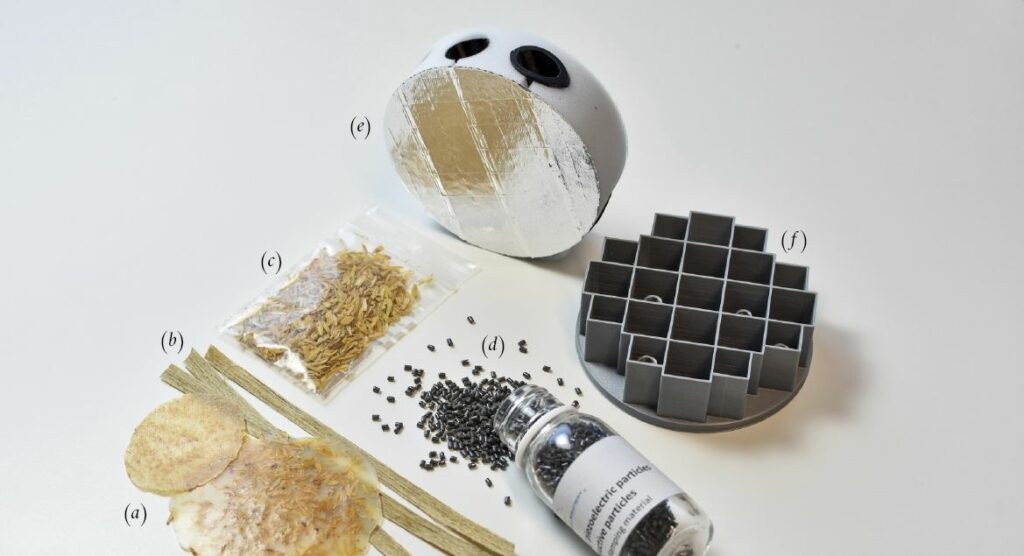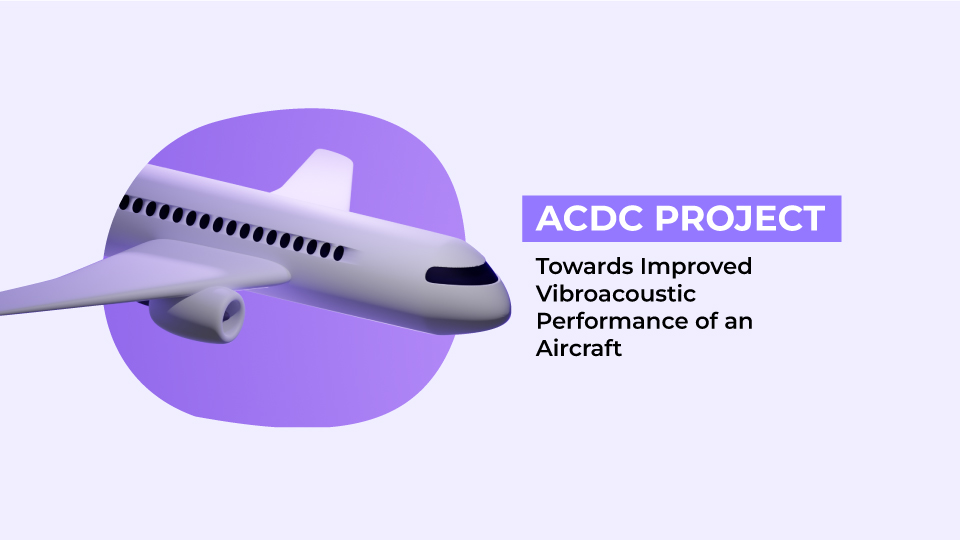Launched in 2022 for a duration of 46 months, the ACDC project aims to develop innovative solutions to reduce vibrations and noise in aircraft nacelles and cabins, by leveraging the use of bio-based materials, 3D metamaterials, and advanced multi-material structures.
Providing an Acoustic Solution in Response to Stringent Requirements
The evolution of aircraft engines towards UHBR (Ultra High Bypass Ratio) technologies, combined with increasingly strict acoustic comfort requirements for passengers and crew, requires a reassessment of the materials and technologies currently used to mitigate the transmission of vibrations and noise in nacelle and cabin areas.
The ACDC project incorporates all the requirements and technical needs of the aircraft of the future, exploring disruptive concepts to reduce vibration and acoustic transmission. It relies on the use of innovative materials such as bio-based and thermoplastic materials, 3D-printed metamaterials, as well as advanced multi-material architectures.
With participation from Airbus, Metacoustic, Porcher Industries, Bysco, SDTech Micro, ContiTech, the Institut Clément Ader/ISAE, ONERA, and LAUM, and a budget of €2.5 million, the ACDC project aims to develop innovative technological building blocks to attenuate vibratory and acoustic transmission, and enhance sound absorption within targeted frequency ranges. Based on advanced materials, structures, and concepts, these solutions will be integrated into various cabin elements, such as lining panels, floors, and the structures supporting floors and seats.

(a) Nearly circular skins with rice husks, PA11 composite
(b) Pre-impregnated flax fiber and PA11 tapes
(c) Rice husks
(d) PEKK matrix pellets loaded with piezoelectric particles
(e) Acoustic insulator made of metamaterial manufactured with Metacoustic
(f) Acoustic absorber, Helmholtz resonator-type metamaterial produced using polymer additive manufacturing
An experimental and digital platform, combined with modeling tools, will constitute a set of deliverables designed to model, manufacture, and characterize advanced acoustic panels and structures.
Key anticipated developments include:
Optimized demonstrators for specific frequency ranges will be designed, tested, and experimentally characterized.
New generations of bio-based sandwich panel skins will be developed, combining natural fibers with high-performance thermoplastic resins offering improved environmental profiles, while enhancing fire resistance.
Absolute vibration filters will be developed from 3D-printed lattice structures, whose complex architecture—composed of interwoven meshes—enables precise control of vibrations.
The project now opens new perspectives for multifunctionality, aiming to combine acoustic and vibratory performance with advanced mechanical properties. Within this framework, the GRAMM project is being assembled to meet structural requirements.
In parallel, the MOLY project, also in preparation, will focus on the development of multifunctional thermoplastic foams, combining sound insulation, vibration reduction, and thermal performance, to complete the range of solutions for aircraft floors.


